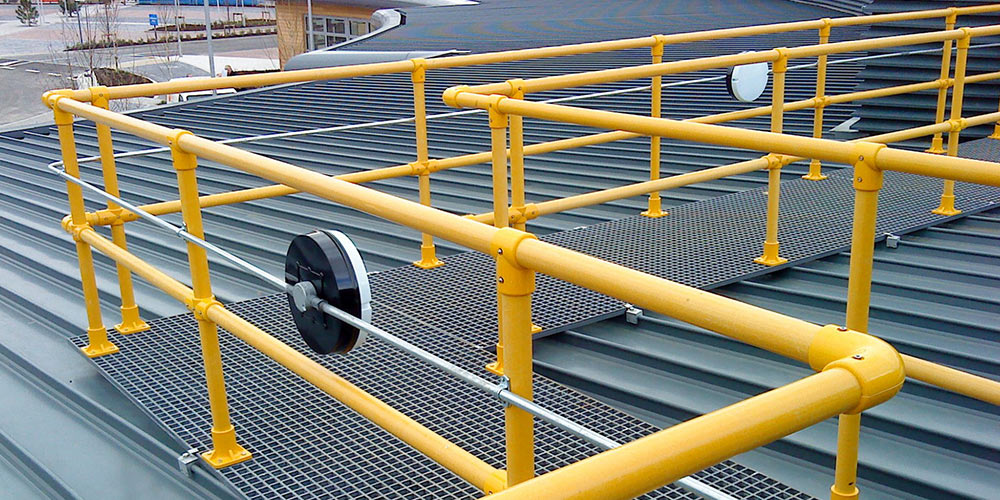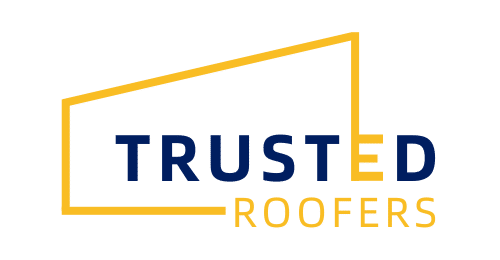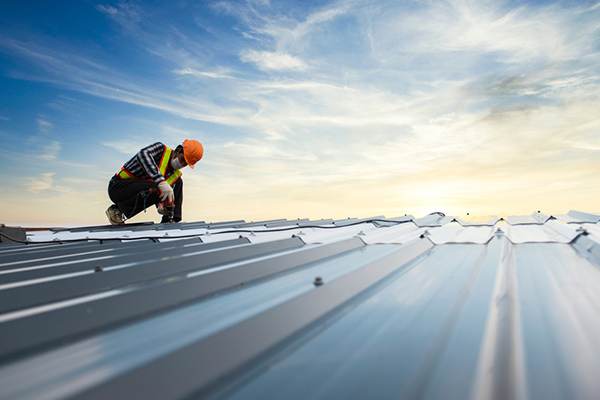Key Takeaways
- The height of the building and frequency of rooftop access significantly influence the required safety measures.
- Safety rails are mandated by OSHA for rooftops with a drop of four feet or more to prevent falls.
- There are permanent and temporary safety rails; the choice depends on the building’s needs and usage.
- Non-compliance with safety rail regulations can lead to severe legal and financial consequences.
- Proper installation of safety rails requires adherence to OSHA guidelines, including a minimum height of 42 inches.
One critical area that demands rigorous attention for occupational safety is the protection of individuals working on commercial building rooftops. Given the height and exposure associated with such environments, implementing robust safety measures is not only a regulatory requirement but a fundamental aspect of workplace safety. The Occupational Safety and Health Administration (OSHA) in the United States sets forth specific guidelines to mitigate the risks of falls from rooftops, which remain one of the leading causes of severe workplace injuries and fatalities.
Legal Requirements for Safety Rails on Commercial Building Rooftops
Safety rails on commercial building rooftops are essential components mandated by various legal standards and regulations to ensure the safety of workers and other individuals accessing these areas. The primary regulatory body in the United States responsible for enforcing these safety measures is the Occupational Safety and Health Administration (OSHA).
OSHA’s guidelines are quite specific: any rooftop that has a potential drop of four feet or more must be equipped with safety rails or another form of fall protection system.
This requirement is in place to mitigate the risk of falls, which are a significant source of serious work-related injuries and fatalities.
The installation of safety rails not only provides a physical barrier to prevent falls but also underscores an employer’s commitment to creating a safe working environment. Compliance with these regulations is not only a legal obligation but also a moral one, as it directly impacts the well-being of those who work on commercial building rooftops. Non-compliance can result in hefty fines and, more critically, increased risk of accidents and injuries.
By adhering to OSHA’s standards, businesses ensure that they meet national safety standards, helping to protect workers from the inherent dangers posed by working at heights. This adherence is also crucial for maintaining a company’s reputation and operational integrity in industries where safety is closely monitored and highly regulated.
Risk Assessment
Conducting risk assessments is essential to determine the specific safety requirements for commercial rooftops. This process involves a thorough evaluation of potential hazards that could pose a risk to workers while they are performing their duties at height. The primary aim of a risk assessment in this context is to identify and mitigate risks associated with falls, which are among the most serious hazards in construction and maintenance activities.
During the risk assessment, several factors are taken into account:
- Height of the Building: The greater the height, the higher the risk of severe injury or fatality in the event of a fall. Buildings that exceed certain heights may require more stringent safety measures, including the installation of permanent safety rails.
- Frequency of Rooftop Access: How often workers access the rooftop influences the level of risk. Frequent access increases the likelihood of accidents, thereby necessitating robust safety measures.
- Nature of Tasks Performed: The specific activities carried out on the rooftop also dictate the type of safety installations needed. Tasks that involve moving heavy equipment, working near the edge, or performing duties that require concentration away from immediate surroundings might increase the risk of falls.
These assessments help in creating a tailored approach to safety that addresses the unique needs and vulnerabilities of a specific rooftop environment. By understanding and addressing these risks, businesses can implement effective safety measures such as safety rails to prevent workplace injuries and fatalities.
Typical Hazards Mitigated by Safety Rails
Commercial rooftops often present several hazards, with falls being the most significant. Safety rails help mitigate risks such as:
Falls from Edges
Commercial buildings frequently feature rooftops that can pose significant fall risks, particularly when the roof edges are not adequately secured. Guardrail systems are crucial in these environments as they provide a physical barrier that prevents individuals from accidentally stepping over the leading edge. This prevention is especially important in scenarios where workers may not always be focused on their proximity to the roof’s perimeter due to their tasks.
Slips and Trips
In addition to edge-related falls, commercial rooftops can be prone to causing slips and trips. These incidents can be triggered by a variety of factors including uneven roofing materials, weather conditions such as rain, ice, or snow, and the presence of maintenance equipment or other obstacles. Neglect of a roof can result safety hazards appearing and is a reason why inspections are essential to ensure the roof environment remains a safe place for workers. Safety rails contribute to mitigating these risks not only by providing something to grasp in case of a slip but also by delineating clear paths that are safer for workers to traverse, helping them avoid potential hazards.
Types of Safety Rails
Commercial buildings with roof access require safety rails to protect workers and visitors from potential falls, which can lead to serious injuries or fatalities. Understanding the different types of safety rails available is crucial for selecting the right protection for a building’s specific needs.
Permanent vs. Temporary Safety Rails
- Permanent Safety Rails: These rails are installed with the intention of remaining in place for the life of the building. They are typically bolted or welded to the roof’s structure, providing a robust barrier that does not need to be moved or adjusted once installed. Permanent safety rails are essential for buildings where frequent access to the roof is necessary, such as for maintenance of HVAC systems or other equipment.
- Temporary Safety Rails: Temporary safety rails are designed for short-term use and are ideal during construction projects or when temporary access to the roof is needed. These systems are usually easy to install and dismantle without making permanent alterations to the roof. They offer flexibility and are a cost-effective solution for providing safety during limited periods.
Metal vs. Non-metal Safety Rails
- Metal Safety Rails: Typically made from steel or aluminum, metal safety rails are favored for their durability and strength. They can withstand harsh weather conditions and provide a high level of security for longer periods. However, metal rails require maintenance to prevent issues such as rust and corrosion, especially in climates with extreme weather.
- Non-metal Safety Rails: These are often made from materials like reinforced plastics or composites. Non-metal rails are lighter than metal options, making them easier to install and move. They are particularly useful for temporary setups or when quick deployment is needed. While they offer less permanence and might not be as durable as metal, they still provide sufficient protection for many applications.
Pros and Cons of Different Safety Rail Materials
| Aspect | Pros of Metal Rails | Cons of Metal Rails | Pros of Non-metal Rails | Cons of Non-metal Rails |
|---|---|---|---|---|
| Installation & Maintenance | Long lifespan with proper maintenance | Higher initial installation cost | Easier and faster to install and remove | More susceptible to damage from UV rays and harsh weather |
| Durability & Stability | High durability and stability | Requires regular maintenance to prevent deterioration | More adaptable to different situations | May not provide the same level of durability and stability |
| Environmental Resistance | Capable of withstanding extreme environmental conditions | Less flexibility once installed | Generally more cost-effective for temporary use | Typically less suited for permanent safety solutions |
Installation of Safety Rails on Commercial Buildings
The installation of safety rails on commercial building rooftops is governed by stringent guidelines to ensure worker safety, primarily aimed at preventing falls from heights. According to the Occupational Safety and Health Administration (OSHA), safety rails must be securely anchored and must stand at a minimum height of 42 inches to provide adequate barrier protection. The installation process requires precise measurements and careful adherence to safety standards to ensure that the rails are both effective in preventing falls and compliant with legal requirements. This involves selecting durable materials and designing the railings to withstand various forces, such as the weight of a person leaning or falling against them.

Maintenance of Rooftop Safety Rails
Regular maintenance is crucial to ensure that rooftop safety rails continue to provide the necessary level of protection over time. Maintenance routines should include periodic inspections to assess the structural integrity and stability of the safety rails. It is important to check for signs of wear and tear, such as corrosion or loosening of fixtures, which could compromise the railing’s ability to withstand the forces exerted during a fall. Ensuring that these safety features are in optimal condition mitigates the risk of accidents, thereby safeguarding individuals who access commercial rooftops for maintenance, construction, or other activities. Maintenance schedules should be rigorously followed, and any potential issues identified during inspections must be addressed promptly to maintain the effectiveness of the safety barriers.
Conclusion
The legal requirements for installing safety rails on commercial building rooftops underscore a crucial commitment to safety and compliance that extends beyond mere regulatory adherence. By implementing and maintaining proper safety rails, businesses not only safeguard their employees against potential hazards but also fortify their reputation in industries where safety is paramount. The comprehensive approach to evaluating risks, choosing the appropriate type of safety rail, and ensuring ongoing maintenance is indispensable for fostering a secure and reliable work environment. As workplaces continue to evolve, so too must the measures taken to protect those who operate within them, ensuring that safety remains a top priority in the face of ever-present risks.
Frequently Asked Questions
Are commercial buildings required to have safety rails on roofs?
Yes, in many regions, safety rails are mandatory on commercial roofs to prevent falls and ensure the safety of workers and maintenance personnel.
What regulations govern the installation of safety rails on commercial roofs?
Safety rail installation is typically governed by OSHA guidelines or local building codes, which specify height, strength, and other safety features.
Who is responsible for installing safety rails on commercial roofs?
The building owner is responsible for installing and maintaining safety rails to comply with legal safety standards.
What happens if a commercial roof does not have the required safety rails?
Lack of safety rails can lead to legal penalties, increased liability in case of accidents, and potentially severe financial and reputational damage.
Can safety rails on commercial roofs be temporary?
Yes, temporary safety rails are permissible during construction or certain operations, provided they meet all required safety standards.



